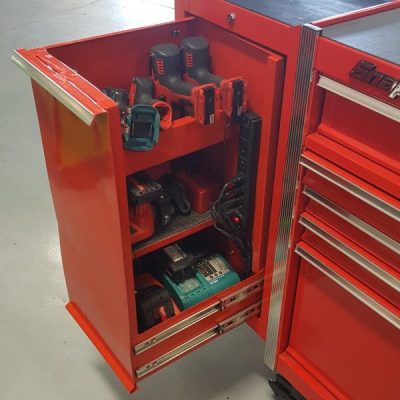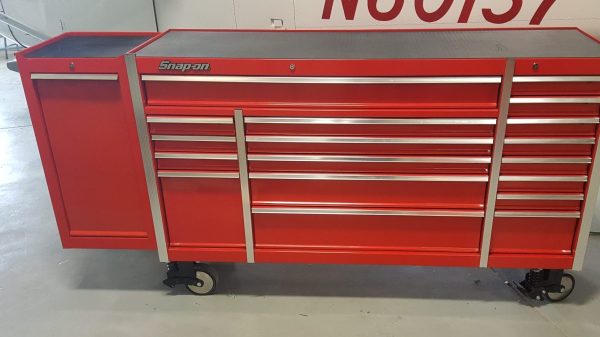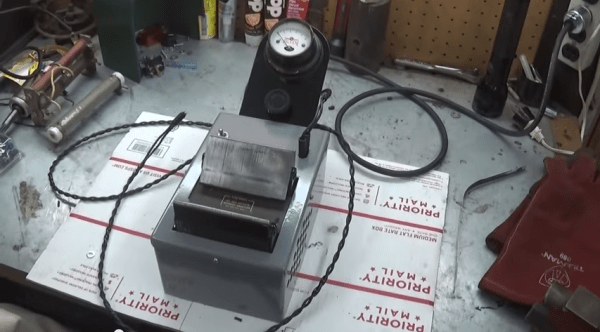Problem: you’re a student mechanic and you’ve already poured a ton of money into a Snap-On roller cabinet loaded with the tools of the trade, but you still need sensible storage for your cordless tools. Solution: a DIY version of Snap-On’s PowerCab cordless tool station at a fraction of the cost.
 Mechanics seem to have a love-hate relationship with Snap-On tools. Some love the brand, others hate it, but the majority seem to hate that they love the tools. It sounds like [GenTQ] reached her limit on brand loyalty when even her 50% student discount wasn’t enough to entice her to add Snap-On’s admittedly very cool KRL1099 cabinet for cordless drivers and chargers. So it was off to Harbor Freight for their seven-drawer side cabinet for less than $200. The cabinet was gutted of drawers, a frame for the new slide-out was welded up, and sheet steel was fabricated into organizer shelves and a new drawer front. A power strip and drag-chain were added to feed the chargers, and the new drawer went off to the powder coater for a matching paint job.
Mechanics seem to have a love-hate relationship with Snap-On tools. Some love the brand, others hate it, but the majority seem to hate that they love the tools. It sounds like [GenTQ] reached her limit on brand loyalty when even her 50% student discount wasn’t enough to entice her to add Snap-On’s admittedly very cool KRL1099 cabinet for cordless drivers and chargers. So it was off to Harbor Freight for their seven-drawer side cabinet for less than $200. The cabinet was gutted of drawers, a frame for the new slide-out was welded up, and sheet steel was fabricated into organizer shelves and a new drawer front. A power strip and drag-chain were added to feed the chargers, and the new drawer went off to the powder coater for a matching paint job.
It may not have the Snap-On badge, and purists may cringe at the mixed-marriage with Horror Fright, but we like the results just fine. And she saved something like $1200 in the process. We think Harbor Freight gets a bad rap, deservedly so for some tools, but there are hidden gems amid the dross just ripe for the hacking, as [GenTQ] ably shows.
[via r/DIY]













